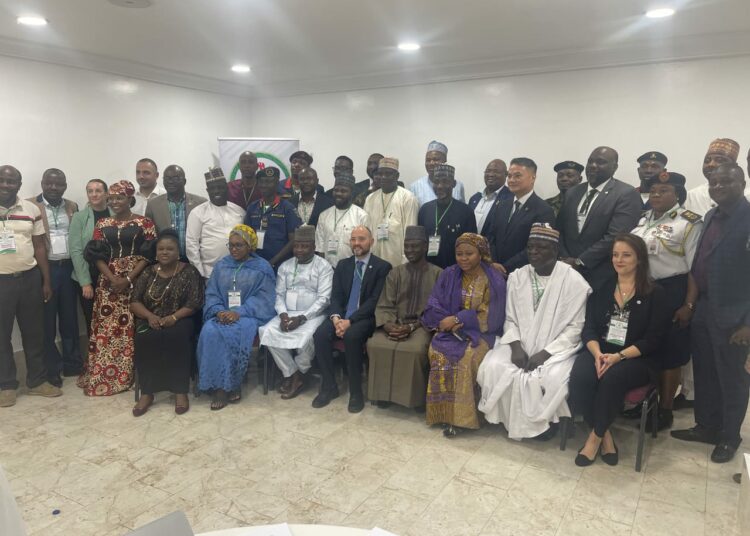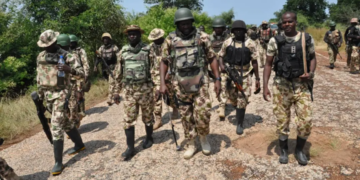The federal government has highlighted the potential danger of explosive ordnance (EO) to civilians in the northeast, saying “a national Humanitarian Mine Action plan has been captured in several policy documents but is yet to be implemented.”
The minister of Humanitarian Affairs, Disaster Management and Social
Development, Hajiya Sadiya Umar Farouk, disclosed this yesterday in Abuja during the inaugural Mine Action Meeting.
She said forgotten mines remain active long after the war has ended, noted that they are a big challenge as their presence limits access to arable land for agricultural production, restricts freedom of movement, and hinders early recovery.
For example, the minister who was represented by the director of Humanitarian Affairs department of the Ministry Alhaji Grama Ali said the Buhari
Plan 2015 for the North East, recognised humanitarian mine action as a priority area and identified explosive ordnance
risks as one of the challenges to return and prolonged displaced persons.
Similarly, the minister said the Yobe State Buniyadi Baseline Community
Assessments June 2020, recommends the clearance of farmlands from explosive ordinances to allow for the
resumption of agricultural/economic activities.
She noted that many areas in the northeast remain contaminated with Explosives Ordinances (and will require the undertaking of the five Pillars of Humanitarian Mine Action (HMA) namely: clearance, explosive ordnance risk education, victim assistance, advocacy and stockpile destruction.
Most recently, she recalled that on 25 July, 2022 eight people were killed by EOs in Bama LGA as they were scavenging for scrap metal.
She said, ”As both the federal government of Nigeria and state governments in the North East begin the process of returning, resettlement, reintegrating and rehabilitating IDPs and refugees to long-abandoned settlements, roads, farmlands, schools, and children’s playgrounds, one inevitable potential danger, is the threat of different kinds of explosive ordnances (EOs).
“These forgotten dangers remain active long after war has ended and remain a big challenge as their presence limits access to arable land for agricultural production (essential for food security), restricts freedom of movement (critical for protection) and hinders early recovery.”
Quoting the UN Mine Action Service, since 2016, she said 755 civilians have been killed and 1,321 injured by explosive ordnance – an average rate of more than one civilian every day.
She notes that the ministry had established the National Humanitarian Mine Action Committee to tackle this issue and lead and coordinate all Humanitarian Mine Action activities in Nigeria.
“The Committee will provide advice, recommendations, and concrete plans and projects that would ensure that Nigeria meets its international obligations under the various relevant conventions and treaties.
“I call on all the humanitarian mine action stakeholders assembled here to please support the committee and Nigeria to grow national capacity that will ensure national ownership under a Humanitarian Mine Centre, soon to be established,” she added.










